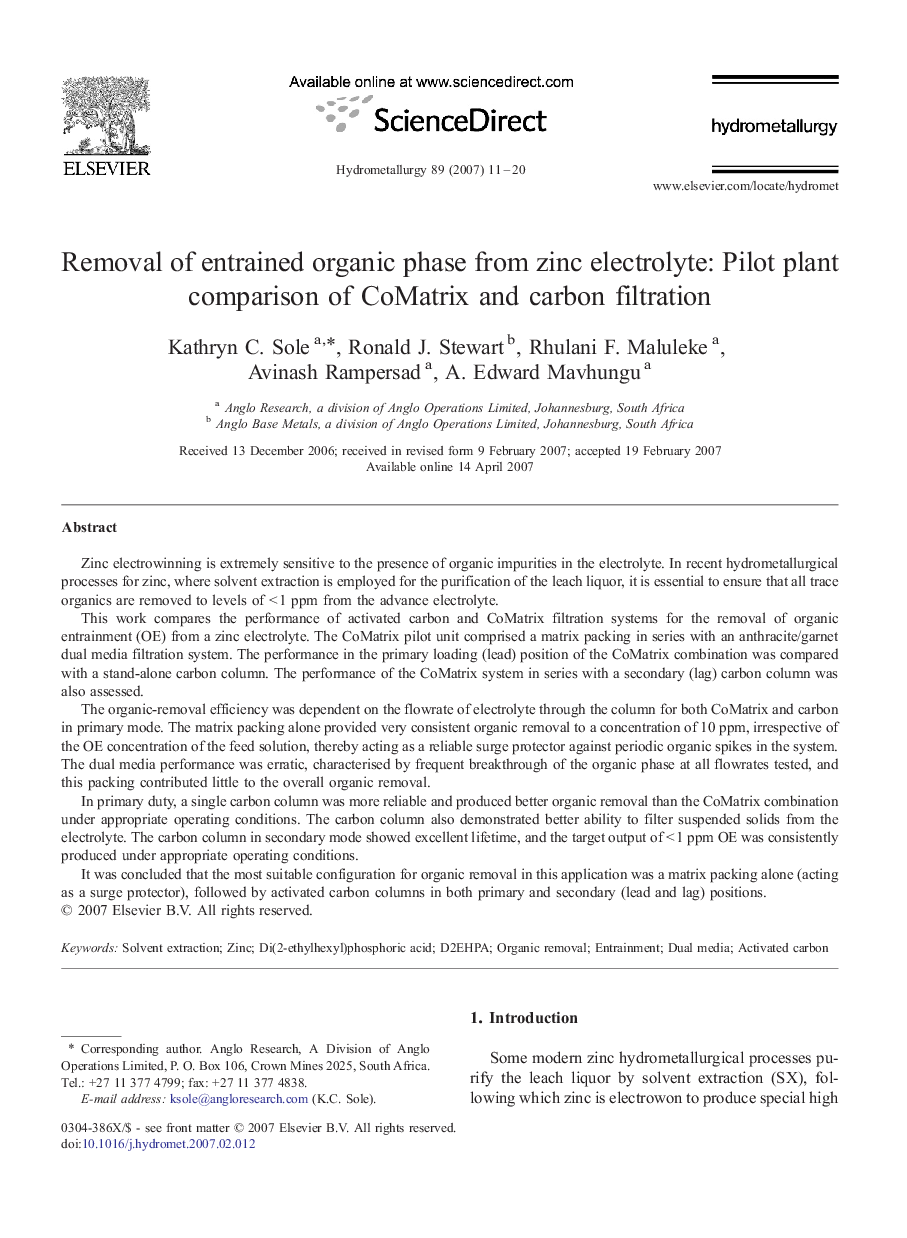| Article ID | Journal | Published Year | Pages | File Type |
|---|---|---|---|---|
| 213409 | Hydrometallurgy | 2007 | 10 Pages |
Zinc electrowinning is extremely sensitive to the presence of organic impurities in the electrolyte. In recent hydrometallurgical processes for zinc, where solvent extraction is employed for the purification of the leach liquor, it is essential to ensure that all trace organics are removed to levels of < 1 ppm from the advance electrolyte.This work compares the performance of activated carbon and CoMatrix filtration systems for the removal of organic entrainment (OE) from a zinc electrolyte. The CoMatrix pilot unit comprised a matrix packing in series with an anthracite/garnet dual media filtration system. The performance in the primary loading (lead) position of the CoMatrix combination was compared with a stand-alone carbon column. The performance of the CoMatrix system in series with a secondary (lag) carbon column was also assessed.The organic-removal efficiency was dependent on the flowrate of electrolyte through the column for both CoMatrix and carbon in primary mode. The matrix packing alone provided very consistent organic removal to a concentration of 10 ppm, irrespective of the OE concentration of the feed solution, thereby acting as a reliable surge protector against periodic organic spikes in the system. The dual media performance was erratic, characterised by frequent breakthrough of the organic phase at all flowrates tested, and this packing contributed little to the overall organic removal.In primary duty, a single carbon column was more reliable and produced better organic removal than the CoMatrix combination under appropriate operating conditions. The carbon column also demonstrated better ability to filter suspended solids from the electrolyte. The carbon column in secondary mode showed excellent lifetime, and the target output of < 1 ppm OE was consistently produced under appropriate operating conditions.It was concluded that the most suitable configuration for organic removal in this application was a matrix packing alone (acting as a surge protector), followed by activated carbon columns in both primary and secondary (lead and lag) positions.
